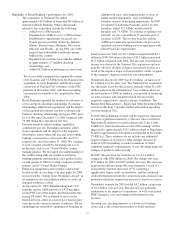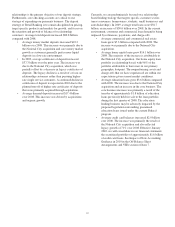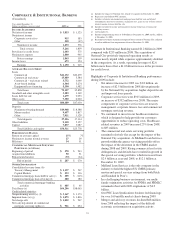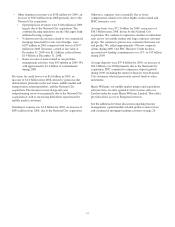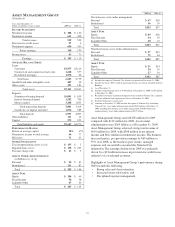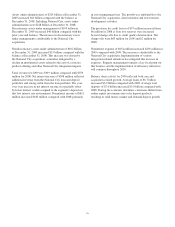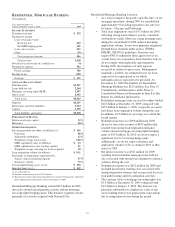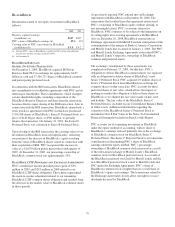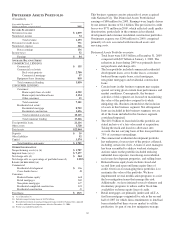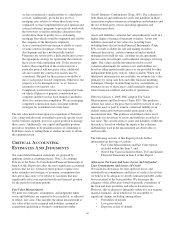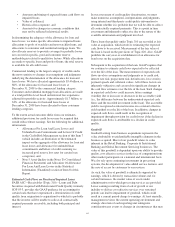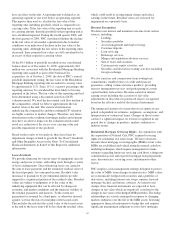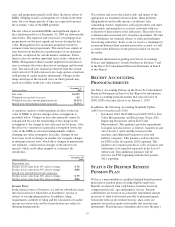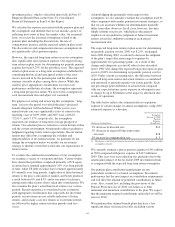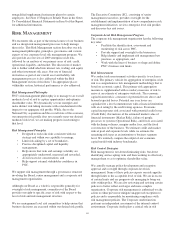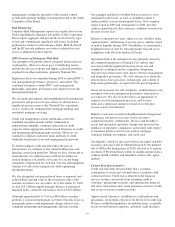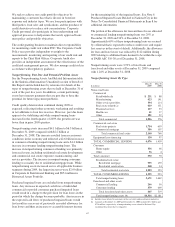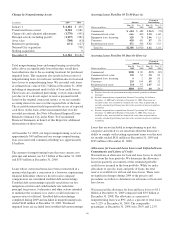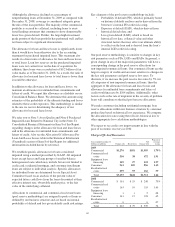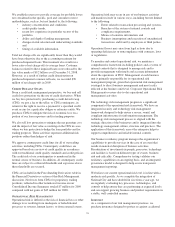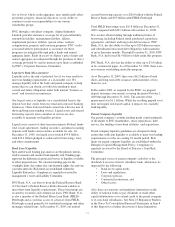PNC Bank 2009 Annual Report Download - page 65
Download and view the complete annual report
Please find page 65 of the 2009 PNC Bank annual report below. You can navigate through the pages in the report by either clicking on the pages listed below, or by using the keyword search tool below to find specific information within the annual report.• Amounts and timing of expected future cash flows on
impaired loans,
• Value of collateral,
• Historical loss exposure, and
• Amounts for changes in economic conditions that
may not be reflected in historical results.
In determining the adequacy of the allowance for loan and
lease losses, we make specific allocations to impaired loans,
allocations to pools of watchlist and non-watchlist loans, and
allocations to consumer and residential mortgage loans. We
also allocate reserves to provide coverage for probable losses
not covered in specific, pool and consumer reserve
methodologies related to qualitative factors. While allocations
are made to specific loans and pools of loans, the total reserve
is available for all credit losses.
Commercial lending is the largest category of credits and is
the most sensitive to changes in assumptions and judgments
underlying the determination of the allowance for loan and
lease losses. We have allocated approximately $3.4 billion, or
66%, of the allowance for loan and lease losses at
December 31, 2009 to the commercial lending category.
Consumer and residential mortgage loan allocations are made
at a total portfolio level based on historical loss experience
adjusted for portfolio activity. Approximately $1.7 billion, or
34%, of the allowance for loan and lease losses at
December 31, 2009 have been allocated to these consumer
lending categories.
To the extent actual outcomes differ from our estimates,
additional provision for credit losses may be required that
would reduce future earnings. See the following for additional
information:
• Allowances For Loan And Lease Losses and
Unfunded Loan Commitments and Letters Of Credit
in the Credit Risk Management section of this Item 7
(which includes an illustration of the estimated
impact on the aggregate of the allowance for loan and
lease losses and allowance for unfunded loan
commitments and letters of credit assuming we
increased pool reserve loss rates for certain loan
categories), and
• Note 5 Asset Quality in the Notes To Consolidated
Financial Statements and Allocation Of Allowance
For Loan And Lease Losses in the Statistical
Information (Unaudited) section of Item 8 of this
Report.
Estimated Cash Flows on Purchased Impaired Loans
FASB ASC—Receivables (Topic 310) – Loans and Debt
Securities Acquired with Deteriorated Credit Quality formerly
SOP 03-3, provides the GAAP guidance for accounting for
certain loans that have experienced a deterioration of credit
quality from origination to acquisition for which it is probable
that the investor will be unable to collect all contractually
required payments receivable, including both principal and
interest.
In our assessment of credit quality deterioration, we must
make numerous assumptions, interpretations and judgments,
using internal and third-party credit quality information to
determine whether it is probable that we will be able to collect
all contractually required payments. This is a point in time
assessment and inherently subjective due to the nature of the
available information and judgment involved.
Those loans that qualify under Topic 310 are recorded at fair
value at acquisition, which involves estimating the expected
cash flows to be received. Measurement of the fair value of
the loan is based on the provisions of Topic 820. Also, GAAP
prohibits the carryover or establishment of an allowance for
loan losses on the acquisition date.
Subsequent to the acquisition of the loan, GAAP requires that
we continue to estimate cash flows expected to be collected
over the life of the loan. The measurement of expected cash
flows involves assumptions and judgments as to credit risk,
interest rate risk, prepayment risk, default rates, loss severity,
payment speeds and collateral values. All of these factors are
inherently subjective and can result in significant changes in
the cash flow estimates over the life of the loan. Such changes
in expected cash flows could increase future earnings
volatility due to increases or decreases in the accretable yield
(i.e., the difference between the undiscounted expected cash
flows and the recorded investment in the loan). The accretable
yield is recognized as interest income on a constant effective
yield method over the life of the loan. In addition, changes in
expected cash flows could result in the recognition of
impairment through provision for credit losses if the decline in
expected cash flows is attributable to a decline in credit
quality.
Goodwill
Goodwill arising from business acquisitions represents the
value attributable to unidentifiable intangible elements in the
business acquired. Most of our goodwill relates to value
inherent in the Retail Banking, Corporate & Institutional
Banking and Global Investment Servicing businesses. The
value of this goodwill is dependent upon our ability to provide
quality, cost effective services in the face of competition from
other market participants on a national and international basis.
We also rely upon continuing investments in processing
systems, the development of value-added service features, and
the ease of access by customers to our services.
As such, the value of goodwill is ultimately supported by
earnings, which is driven by transaction volume and, for
certain businesses, the market value of assets under
administration or for which processing services are provided.
Lower earnings resulting from a lack of growth or our
inability to deliver cost-effective services over sustained
periods can lead to impairment of goodwill, which could
result in a current period charge to earnings. At least annually,
management reviews the current operating environment and
strategic direction of each reporting unit taking into
consideration any events or changes in circumstances that may
61


